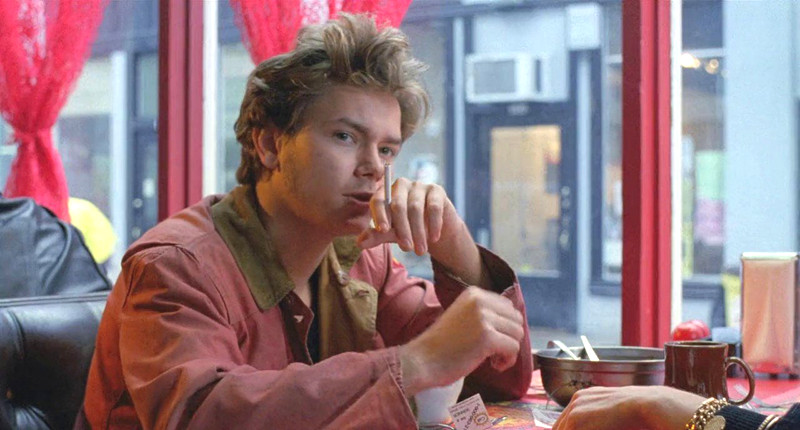
The 1990s for film meant finding a new edge: instead of repeating the past, or relying on standard tropes and stories, filmmakers felt the need to forge a new path of their own. A decade where independent cinema began to emerge as a driving cultural force–and with a surging economy investors were more open to bankroll once-risky endeavors–meant the cinematic landscape opened up wide for new ideas.
And they seemed to flow: between mainstream films continually pushing the envelope of what could be depicted artistically and subject matter-wise, independent films surging to mainstream popularity, and smaller films that launched the careers of directors who would later find greater success in the decades that followed. Here’s a list of 10 totally awesome cult films from that great cinematic decade that you may have missed the first time around.
1. Tremors (1990)
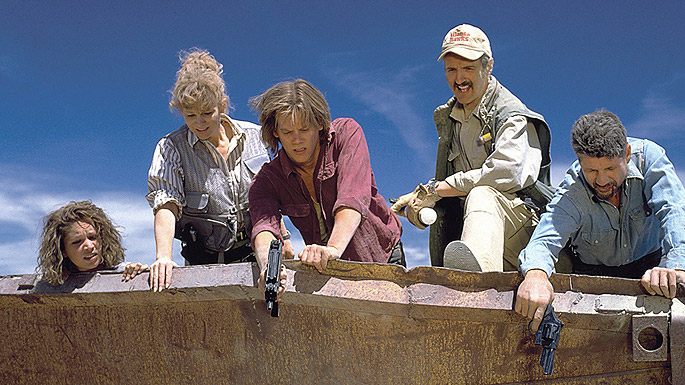
In the deserts of Nevada, two cowboy handymen (Kevin Bacon and Fred Ward) find leaving their abandoned town increasingly difficult: after coming across one resident dead of dehydration on top of an electrical tower and a bunch of heads buried in the sand, a rock slide blocks the only way out of town. When they go to warn some neighbors, they find their car buried in the sand with the lights and radio still on.
Deciding that something’s not right, the two handymen decide to leave on horseback, only to have some underground creature attack their horses. Two seismologists save them and explain what’s happening: gigantic snake-like creatures are swarming just beneath their feet, tracking their vibrations and hunting them.
Getting back to their town, the two men, the seismologists, and the remaining residents of the town–including a gun-toting survivalist couple–find themselves fighting against these creatures (simply called “graboids”) fight together to survive.
A solid horror-comedy with Bacon and Ward as affable leads, Tremors is a winning cult film with its eye as much on being funny as well as suspenseful. Its isolated desert setting serves to keep the action fraught, while the wacky characters that inhabit this world make the film more fun than a movie about underground worm creatures should be. Well-liked enough to spawn four(!) direct-to-video sequels, the original Tremors is an enjoyable monster movie with a lot of humor thrown without ever becoming campy.
2. Metropolitan (1990)
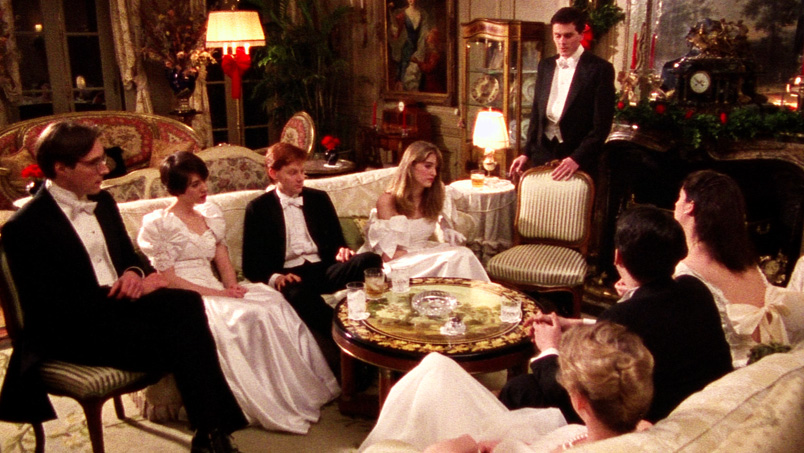
During winter break from college, a middle-class young man with radical political beliefs falls in with a well-heeled, privileged group of Upper East Side socialites who gather to while away the weeks until they return to their Ivy League schools.
As conversations about high society and having missed the Yuppie movement turn both political and personal, relationships are forged, friendships are made and broken, and all of these wonderfully dressed young men and women of pure pedigree are exposed to be just as lost and clueless as anybody else their age despite the airs they put on.
The debut film of celebrated writer/director Whit Stillman, Metropolitan is a wonderfully urbane comedy of manners set in the late 20th century. Almost like an opposite version of American Psycho, instead of following the psychotic Patrick Bateman as he violently tears through Manhattan in an Armani suit, we watch his Yuppie friends while they were in college going to debutante balls and wax philosophical in tuxes.
An exquisitely urbane film, it’s a cult movie that–instead of depending on shock and violence–carries itself via witty conversations about class, society, and other people held by preppies wearing fashionable attire in well-appointed spaces. And maybe that’s the greatest shock of all.
3. My Own Private Idaho (1991)
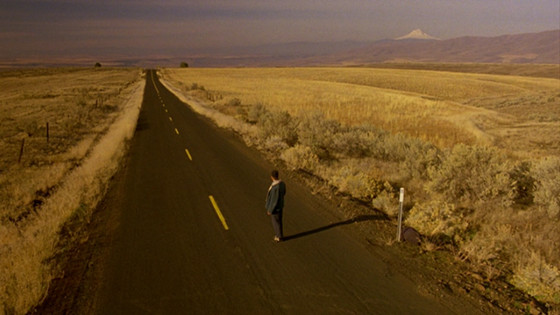
A narcoleptic male prostitute named Mike (River Phoenix) wanders the Northwest, drifting in and out of consciousness as he finds himself in a variety of situations. Mostly he’s accompanied (or rather, is taken care of) by his friend Scott (Keanu Reeves), a fellow hustler whose wealthy father is the mayor of Portland.
Idling in a derelict apartment where a charismatic man named Pigeon holds court over hustlers and homeless children, Scott lets Mike know that when he comes of age, he’s going to retire and return to the upper-class world that he came from. He and Mike travel to Italy in search of Mike’s mother where Scott abandons him.
Upon return, Scott finds that his father has died and turns his back on his former life. Pigeon also passes during this time, and ffter his street funeral, Mike hits the road once again, falling into yet another narcoleptic blackout, his future left uncertain.
Written and directed by Gus Van Sant, My Own Private Idaho is an idiosyncratic retelling of Shakespeare’s Henry IV, Parts I and II Critically acclaimed upon release, with Van Sant’s dreamlike direction and meditative pacing singled out for praise, it reflects the dreamlike state which Phoenix’s character Mike experiences the world as a wandering, hustling narcoleptic.
The depiction of its main characters’ fluid sexualities were bold for its time period, and the film features perhaps cult actor River Phoenix’s best performance.
4. Delicatessen (1991)
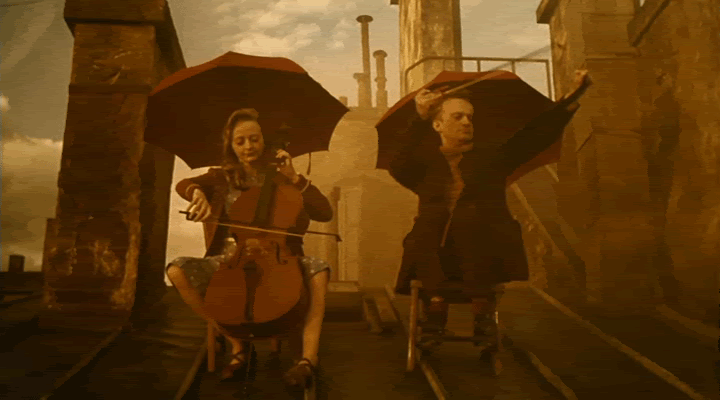
In post-apocalyptic France, a landlord/butcher keeps his tenants fed by posting fake job advertisements in the local paper, murdering the applicants, and then turning them into fresh meat for consumption. This keeps everyone in his building happy and his business booming in tough times until an unemployed clown turns up for the advertised job.
When the clown falls in love with the butcher’s daughter, proves himself a talented apprentice, and befriends a number of the tenants, the butcher hesitates in murdering him. But when the tenants begin to worry about their source of food, and the daughter–knowing of her father’s plans–contacts the rebel underground for assistance, the entire building turns into a battlezone.
Surprisingly much more whimsical than this description suggests, this film is a strange mix of the charming fantasy Amélie and the decrepit The City of Lost Children. No surprise that this was the debut feature of the directors of both of those movies, Marc Caro and Jean-Pierre Jeunet. In parts weird, romantic, and comedic, fans of Terry Gilliam’s work will find Delicatessen a treat while foreign cult film fans will enjoy the stylish and macabre tone of the film and utter strange world this movie builds.
5. Slacker (1991)
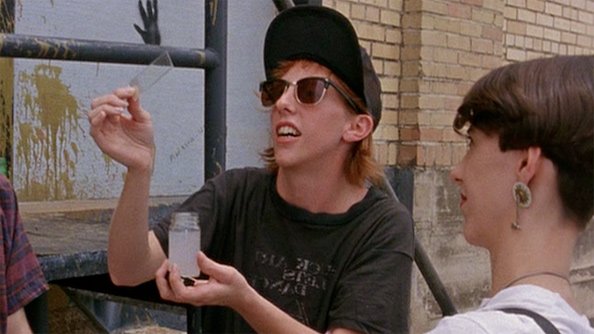
In Austin, Texas, a wandering camera drops in on a parade of eccentrics, street philosophers, and (yes) slackers as they pass the time speaking their mind, sharing their conspiracy theories, or whatever else is is inhabiting their thoughts at that moment.
There’s no linear plot as over a hundred characters–mostly young people, and almost all of them defiant nonparticipants in US society–testify, nearly documentary-style, about just why they have decided to not pursue The American Dream. As many in the film posit, why bother? After all, living a frivolous life amounts to just the same as a productive one in the end.
Made for just $3000, it was Richard Linklater’s first full-length feature. Serving as writer, producer, and director, Linklater’s wandering eye film about the slackers of Generation X was a direct inspiration for Kevin Smith to make his own low-budget film about slackers, Clerks, just a few years later.
A seminal film that acts as a thesis to the once-meteoric cultural outlook Gen X would (ironically) soon take over mainstream culture with–even if they eventually gave up their slacker mentality and joined the rat race of capitalism–Slacker works as both a time capsule and a uniquely weird cult film filled with strange, aimless, philosophizing characters in its own right.